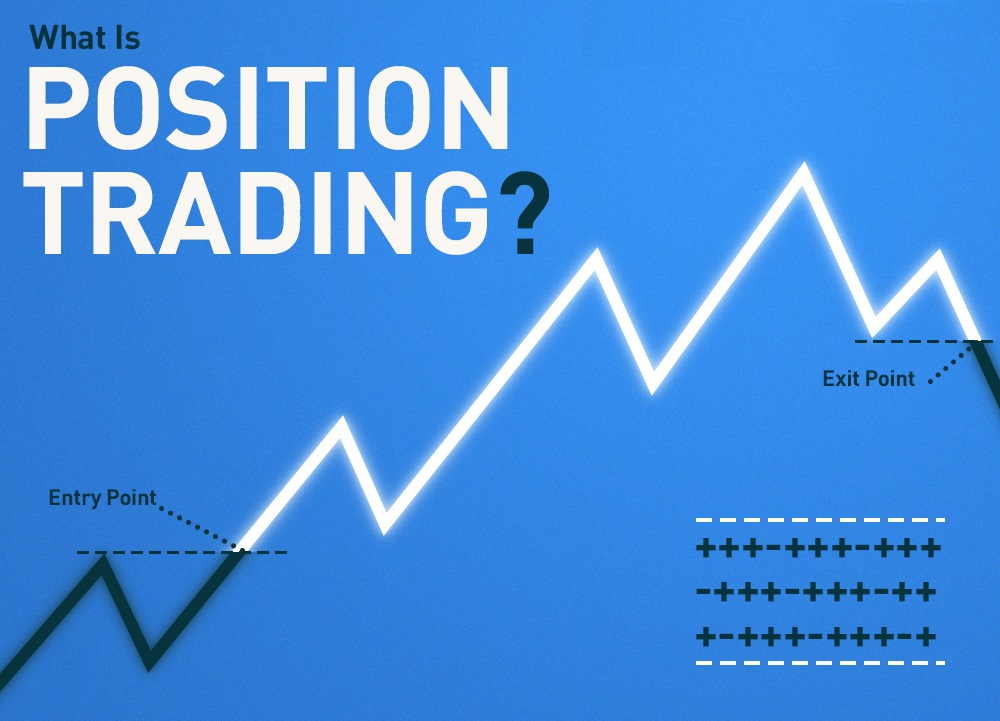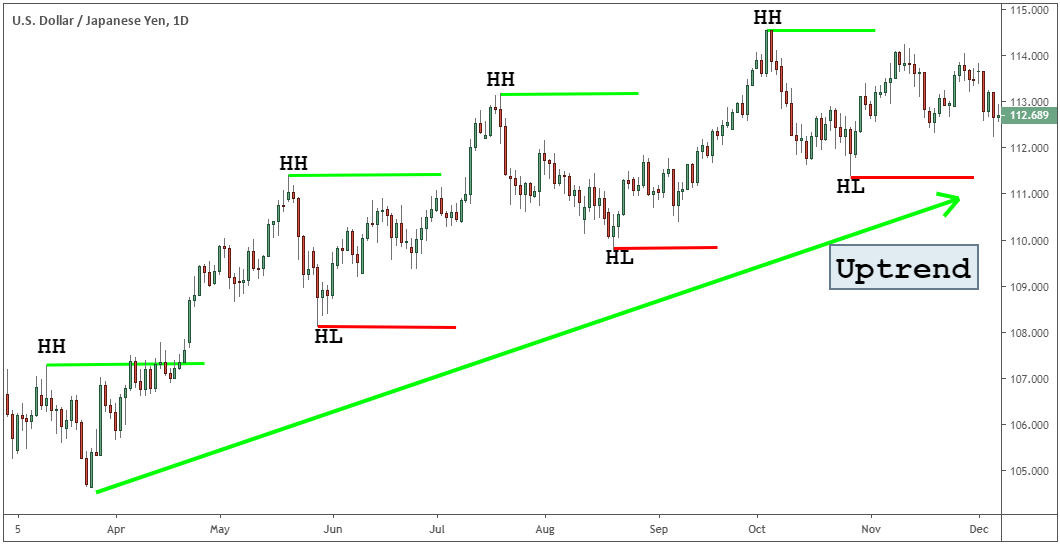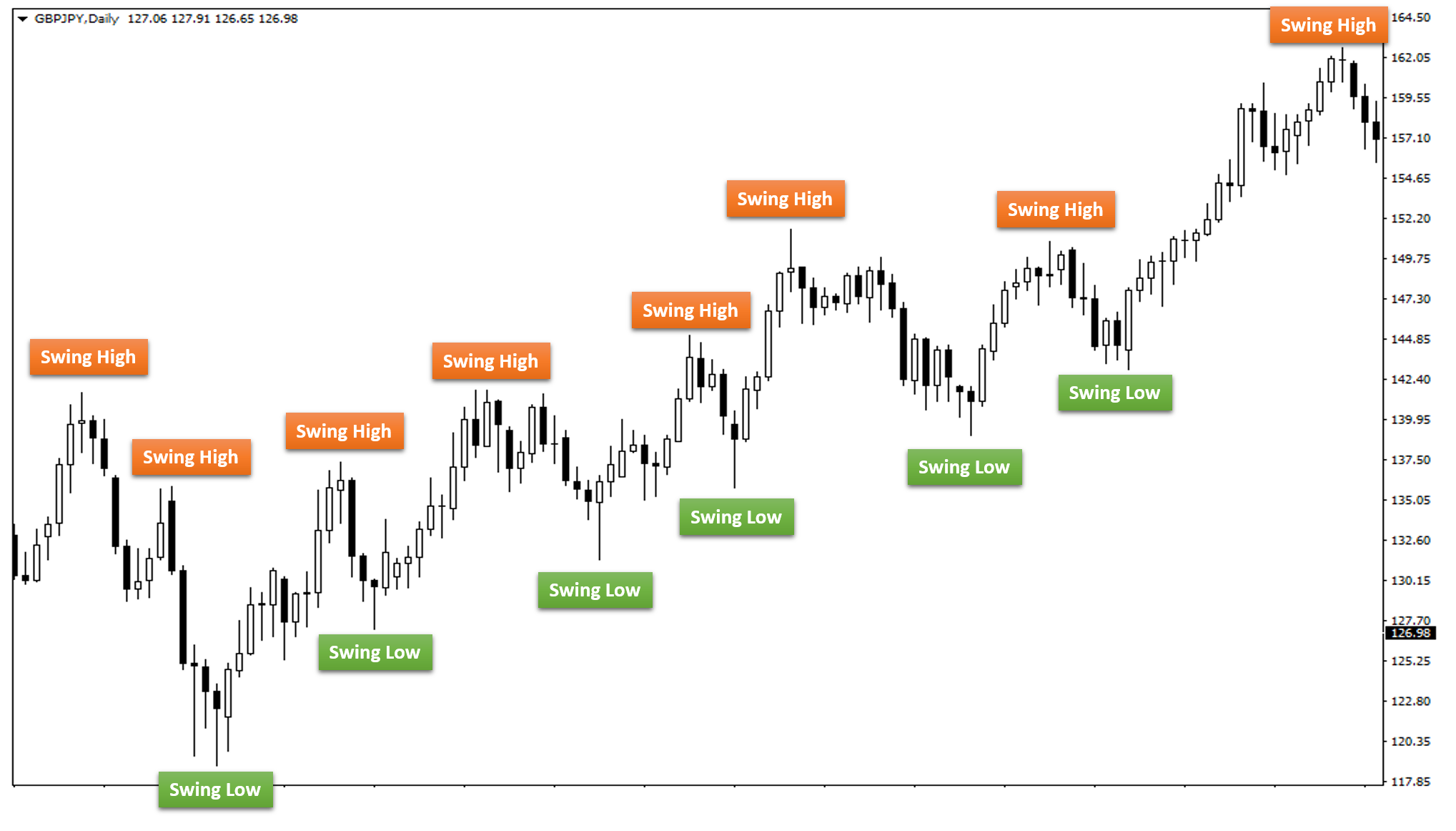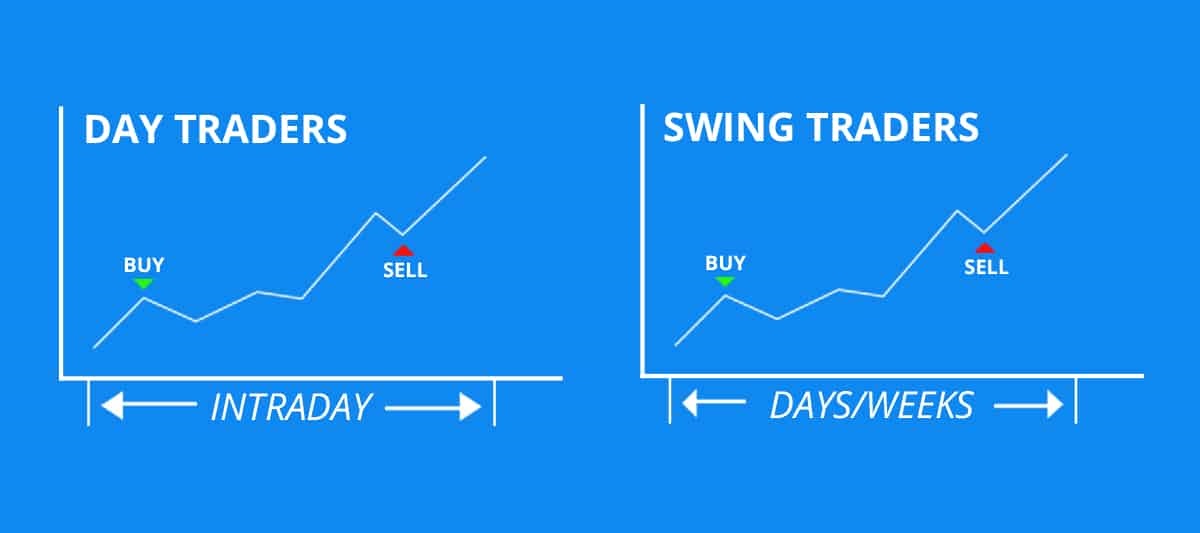This publication aims to help fulfil the mission of “Applications In Life” Fondation to support and develop accessible and understandable financial education by improving financial culture and forward-thinking mentality of the civil society.
There are four main trading styles, namely scalping, day trading, swing trading and position trading. In addition to the main 4 styles, we will mention several other types of trading – trend and carry trading styles. The difference between the styles is based on the length of time the trades take place. Scalping trades are performed in just a few seconds or at most a few minutes. Daily trading trades take place in a few seconds to a few hours. Swing trading deals usually take place over several days. Position trading takes place from a few days to several years.
It can be a difficult task for new traders to choose the trading style that best suits their personality, but it is necessary for their long-term success as a professional trader. If you are a new trader (or even an experienced trader) who still does not feel as if you have found your trading style, below are some of the personality traits that are compatible with the different trading styles.
You will have a better chance of being a profitable trader, by choosing the trading style that best suits your personality, so be honest, even if you do not like some of the listed personality traits.
Position trading
Position trading is the longest-term trading style, which requires a good understanding of the basics, an exceptional gut feeling, and a good insight into how the price will vary in the long run. This is a trading style for traders with nerves of steel and angelic patience, those who don’t mind waiting long periods for their well-deserved rewards.

The main goal of position traders is to take advantage of dominant trends, not short-term market fluctuations.
Usually position traders are not only extremely smart, but also very rich. In order to withstand significant troughs and price fluctuations, each trader of positions must have a significant account.
Position traders are independent thinkers. According to them, they are convinced and tend to ignore random fluctuations in the market, which can scare less confident traders.

Example of a trader is Warren Buffet. He is the first who comes to mind when we think about the most prosperous market participants executing long-term trades. He is a legend and one of the wealthiest men in the world. He is widely known as the most successful investor and has been a trader in foreign exchange positions since 2002. Buffett then sold the US dollar, arguing that it should fall due to America’s trade deficit. The next few years were successful for him, but in 2005 the US currency rose and Buffett decided to step down from his short US position. As a result, he earned $2 billion on the trade. Had it not been for the USD advance in 2005, his profit would have been $1 billion higher.
Scalping
This is one of the most popular forms of trade, especially among newcomers. This is a fast-paced, mind-boggling and adrenaline-inducing type of trading.

The main purpose of scalping is to engage in trading in the busiest hours of the day, to take a very small amount of pips and to leave the market immediately. Although profits from a single transaction may be limited, the trader can increase his return by making dozens of such transactions throughout the day. But the scalper should always know where to stop, as over-trading can quickly upset the account balance once it enters a bad series.
The advantage of scalping
The key advantage of this style of trading is the high potential return (good if you are fast and dexterous enough to execute your trades in a very short period of time). Leverage allows scalpers with modest initial resources to make greater profits, but you need to beware of significant losses that you may incur while using the leverage incorrectly. A pips in your favor can bring you a lot of money with the leverage. In contrast, a pip against you can lead to big losses. So, it is hit or miss type of trading.
Scalping is not suitable for those who are not used to trading in a high-risk environment.
This type of trading demands the in-depth knowledge of your trading platform; you shouldn’t give too much thought to operational procedures; you should be fully concentrated on the movement of the price.

If you are keen on scalping trading, you may be interested to get professional advice from the most successful scalper of all time – Paul Rotter. It is reported that this trader has made 65-78 million dollars a year for 10 years, scalping the most liquid contracts in Forex.
“I’m only looking for the next 3-5 candles. I was the man who constantly opens and closes positions. I had days with around 100 positions in a day. “, admits our scalper.
What did he do to avoid overestimation? He simply sets daily goals for his profits and losses. Before entering the trade, he set the limit on stopping, the maximum loss he could take per day. He took quite risky positions, but when they began to go against him, he mercilessly shut them down. To have an opinion is wrong thing, which will not help you. The more opinion and hesitation you have about a trade, the harder it is to get out, if it is lost one.
In contrast, during his winning phases, he became really aggressive, it took greater risks and diminished only in lost times. Sometimes it’s really hard to do that. Paul Rotter always tried to have someone neutral by his side to force him to turn off his platform once he reached the stop limit.
His trade is not focused, he bases his decisions on market analysis. Before opening the terminal, Paul Rotter tried to check all the economic reports to be published, speeches by influential political figures and central bank governors – anything that could affect the direction of the price – until he got a clear idea of the market.
Trend trading
This is another style of trading that is suitable for those who want to take advantage of price trends that they think can continue for a long time. Such traders are likely to try to identify deep vulnerabilities, exposing themselves to external and internal risks to the currency they are trading in, before deciding to enter the market.

Trading the trend can be really effective. You can collect profits for a long time until the trend starts to reverse. But there is a problem with identifying the time to reverse the trend. You need to be very careful about all the basics that could ruin your winning bet.

George Soros, one of the most successful investors in the world, the man who broke the Bank of England, is perhaps the main trend following trader of our time. In part, due to his trend following strategies, exceptional gut feeling and foresight of “trend-reversal” events he managed to become one of the 30 richest people in the world.
Swing trading
This is a type of trading that combines fundamental and technical analysis to capture the most significant price movements and avoid trading at inactive times. It is mostly a medium-term trading style that requires holding positions open for several days, so you should be patient enough to tolerate the period of time when the price goes against you. The main goal is to identify medium-term trends and enter the market only when there seems to be almost a 100% chance of winning.

Swing trading involves large price movements and therefore requires well-considered management of the size of the position to minimize negative risks.

It is not an easy task to find a really famous swing trader, although there are many coaches and instructors who prefer this style of trading. One of the most famous and respected swing traders is Alan Farley, who has benefited greatly from the use of his swing trading strategies. He is the author of The Daily Swing Trade, which offers various tactics and techniques for swing traders. If you decide that this style of trading suits you, you may be interested to read it.
Carry trade
This is a type of trading in which the trader sells a certain currency at a low interest rate and then uses it to buy another currency that gives a higher interest rate. The main goal of the trader is to capture the existing difference in interest rates and to gain significant profits through leverage.

Assume you notice that interest rates in South Africa are 7%, while the current interest rates in the US are 1%. So, you expect to win a 6% difference between the two rates. For this to happen, you have to borrow US dollars (a low-yielding currency whose issuer has set a relatively low interest rate) and buy a higher-yielding currency, in our example this is the South African rand. You can increase the amounts you have earned with leverage. For example, if you use a standard leverage ratio of 10: 1, you can win 60%. But there is a big risk behind the unpredictability of exchange rates. If the ZAR had to fall against the US dollar, you would lose much of your return. Find out what is the strategy of trade in transportation?
So, although transfer transactions seem very attractive, they are quite risky, especially in unpleasant, uncertain times when investors tend to rush to low-income safe havens, ignoring risky financial assets that offer higher returns.
The profits gained through the transfer of transactions may not be the main goal of the trader, they could be a good addition to the profits he earns from price fluctuations.

Julian Robertson is one of the most famous carry traders the history knows. He used to trade USD/JPY. In the period between 1995 and 1998, this currency pair appreciated more than 66%, in part thanks to carry traders buying high-yielding currencies and selling the yen. The trader can make a 15% profit from interest rate differences, adding to the 66% he earned from the jump in USD / JPY. Julian Robertson was trading USD/JPY with leverage and earned lots of money in that period, although after the 1998 sudden appreciation of the yen, he lost $2 billion.
Day trading
This is another short-term trading style. The day trader usually makes one trade a day and closes it after the day is over.

The main goal of the daily trader is to generate profit within a day, they do not like to keep their position open overnight.
This trading style is best suited for those forex traders, who have enough time throughout the day to analyze the market situation and adjust their position in accordance with price fluctuations during the day. If scalping is too fast for you and swing trading is a bit slow, it means that you’re a day trader.
Day Trading strategy
The day trader must have strong analytical skills, actively use various indicators and other technical tools. In addition, he must have sound economic experience in order to be able to recognize the main trade signals. Also, he should have a truly powerful exit strategy to close his/her opened positions with the highest returns at the end of the day.
Because day traders often reverse their positions, they usually trade in liquid currencies to limit spread costs.

A good example of a day trader is Martin C. Schwartz, the man whose steely nerves and great intellect brought him great wealth and the well-deserved name of Pit Bull. He received national attention when he won the American Investment Championship in 1984. At that time, his trading style became invincible. He has never held a position open for a long time. To place his trades, he follows technical indicators and receives trading signals from economic reports and other fundamental analysis tools.
When it comes to news and basic data, most traders simply focus on the real numbers and then wonder why the markets are not behaving according to the news release. Marty Schwartz believes that trade should not be based on the actual number printed in the title of the economic exemption, but on the reaction of market participants that appears after the publication of the data. Marty advises traders to forget their assumptions, thoughts and listen to what the market is saying, because the purpose of trading is not to confirm your assumptions, but to make money.
Our daily trader often used technical indicators to predict the price direction. His favorite analytical tool of all time is the 10-period exponential moving average (EMA). This technical tool helped Marty distinguish between bullish and bearish scenarios in short-term transactions.
Disclaimer: The publications on this platform aim to provide useful information on financial topics. But they are NOT financial consultation or advice. Therefore they should not be used as a recommendation for making an investment decision on any type of financial products and services. We use in-depth research in the field but do not guarantee the completeness of the published materials. Always consult a specialist in your particular situation. "Applications In Life" Foundation is not responsible for any adverse consequences resulting from actions taken based on the information provided on the platform.


